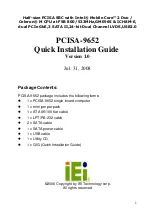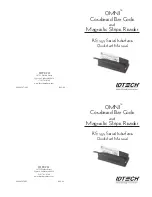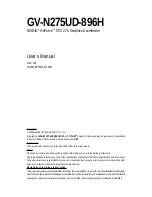
Option BaseXIO
Introduction
(c) Spectrum GmbH
123
Option BaseXIO
Introduction
With this simple-to-use versatile enhancement it is possible to control a wide range of external instruments or other equipment. Therefore you
have up to eight asynchronous digital I/Os available. When using the BaseXIO lines as digital I/O, they are completely independent from
the board’s function, data direction or sampling rate and directly controlled by software (asynchronous I/Os).
Using the option BaseXIO this way is useful if external equipment should be digitally controlled or any kind of signal source must be pro-
grammed. It also can be used if status information from an external machine has to be obtained or different test signals have to be routed to
the board. In addition to the asynchronous I/O function, some of these lines can have special purposes such as secondary TTL trigger lines
(M2i cards only), RefClock seconds signal for the timestamp option and special lines for incremental encoders (M3i cards only).
The eight MMCX coaxial connectors are directly mounted on the base card. When plugged internally with right-angle MMCX connectors,
this options does not require any additional system slot. By default this option is delivered with a readily plugged additional bracket equipped
with SMB connectors, to have access to the lines from outside the system to easily connect with external equipment.
The internal connectors are mounted on two locations on the base card. The picture below shows the location of the MMCX connectors on
the card, the details of the connectors on the extra bracket are shown in the introductional part of this manual.
Different functions
Asynchronous Digital I/O
This way of operating the option BaseXIO allows to asynchronously sample the data on the inputs or to generate asynchronous pattern on
the outputs. The eight available lines consist of two groups of buffers each driving or receiving 4 bits of digital data as the drawing is showing.
The data direction of each group can be individually
programmed to be either input or output.
As a result three different combinations are possible
when using BaseXIO as pure digital I/O:
• 8 asynchronous digital inputs
• 8 asynchronous digital outputs
• mixed mode with 4 inputs and 4 outputs
The table below shows the direction register and the possible values. To combine the values you can easily OR them bitwise.
Register
Value
Direction
Description
SPC_XIO_DIRECTION
47100
r/w
Defines groupwise the direction of the digital I/O lines. Values can be combined by a bitwise OR.
XD_CH0_INPUT
0
Sets the direction of the lower group (bit D3…D0) to input.
XD_CH1_INPUT
0
Sets the direction of the upper group (bit D7…D4) to input.
XD_CH0_OUTPUT
1
Sets the direction of the lower group (bit D3…D0) to output.
XD_CH1_OUTPUT
2
Sets the direction of the upper group (bit D7…D4) to output.














































